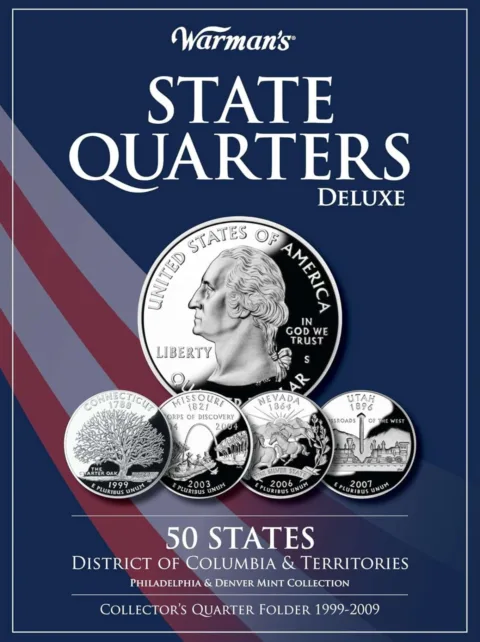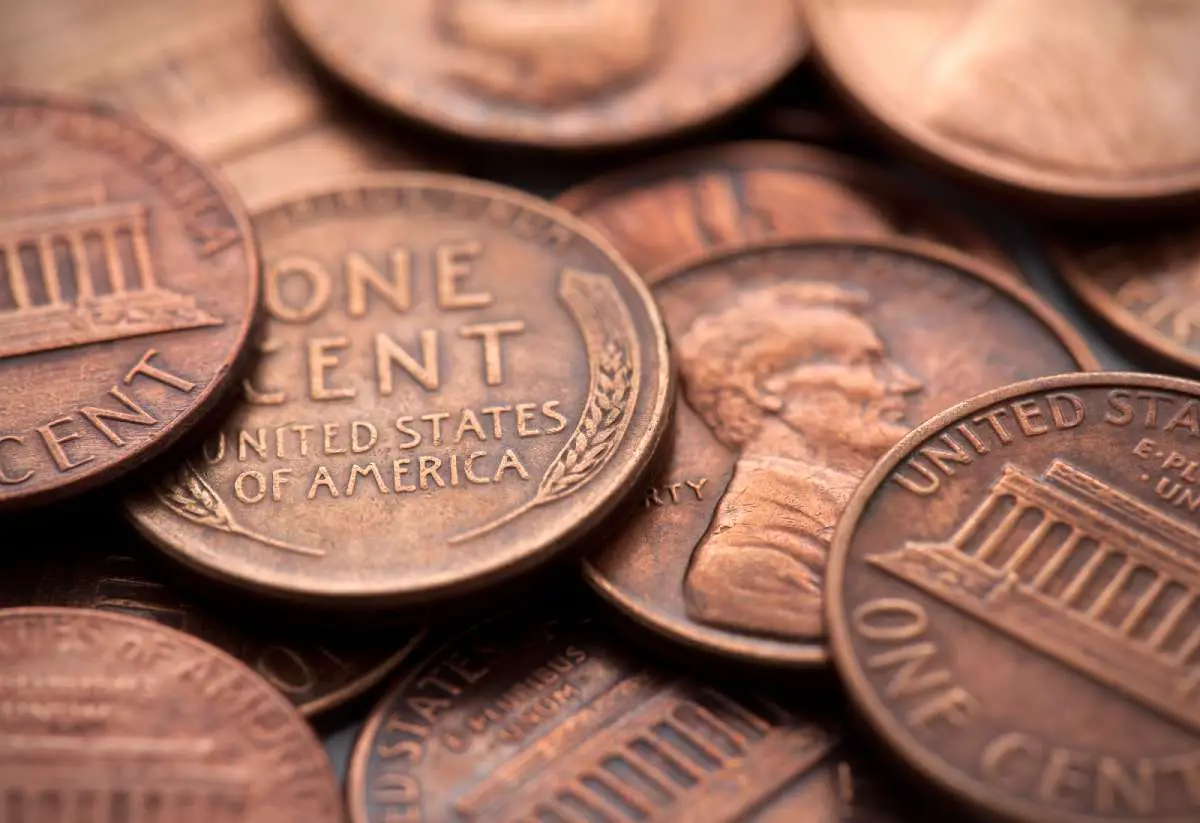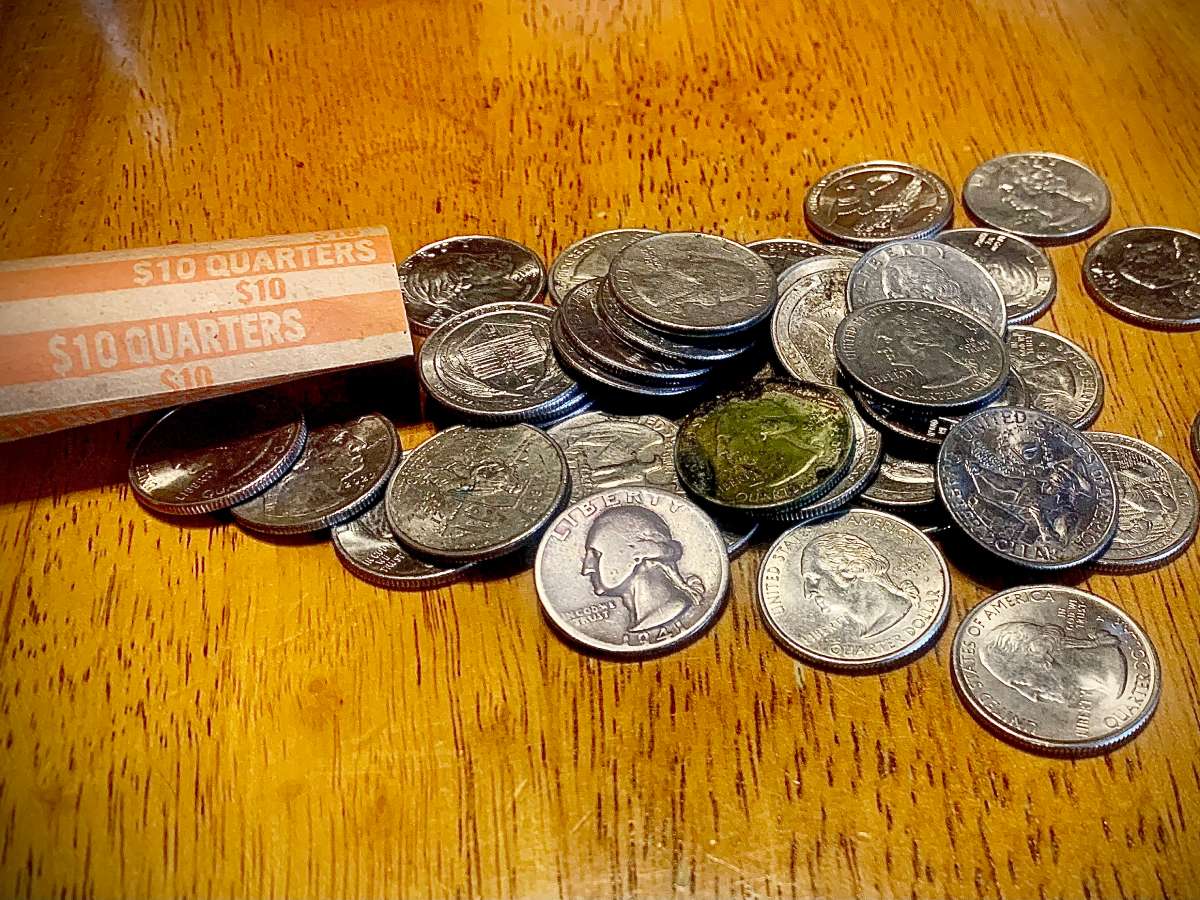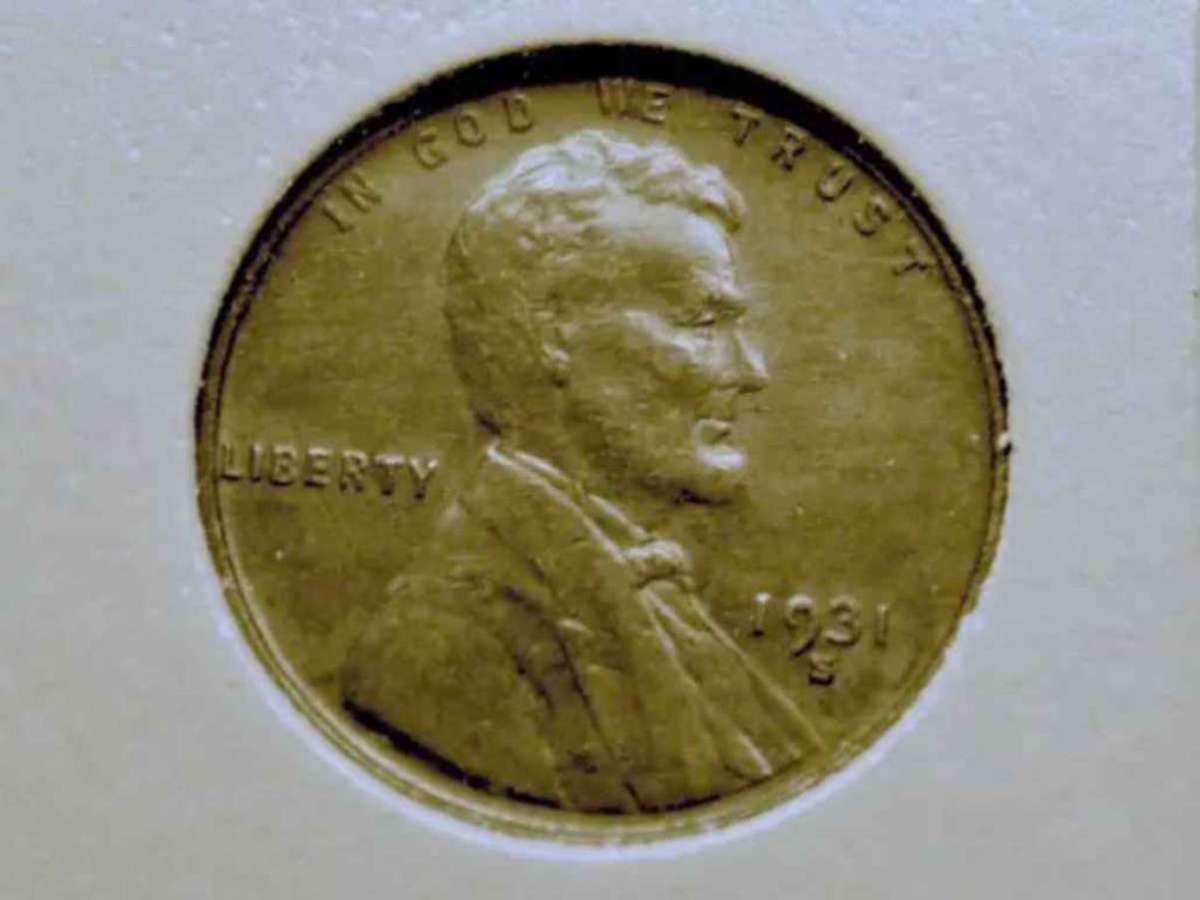Collecting the 50 state quarters is a great way to get started in coin collecting!
But the truth is the statehood quarters are a coin set that is fun for everybody — whether you’ve been collecting coins for years, or if you’ve never collected coins before.
The biggest reason for this is because these quarters can be found in your everyday pocket change — so it’s very easy to complete a circulated set of 50 State quarters for face value!
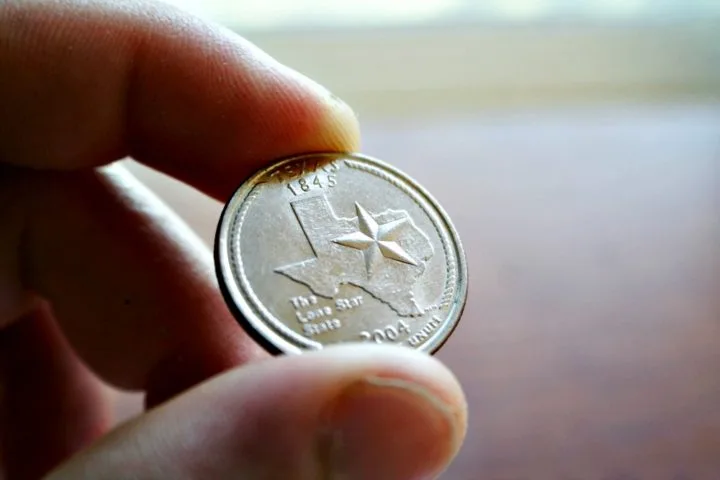
Are you collecting the 50 state quarters?
I’m one of the estimated 147 million people who are collecting the 50 States Quarters series coins.
If you’re saving state quarters, then chances are you’ve got some questions:
- What does it take to complete the set on your own?
- What are the states, and what years were they released?
- How should you organize and store the state quarters in your collection?
- Do you have to collect both Philadelphia and Denver coins for a complete collection?
- How much will it cost to complete the entire collection of 50 States Quarters coins?
A List Of All 50 State Quarters & Their Dates
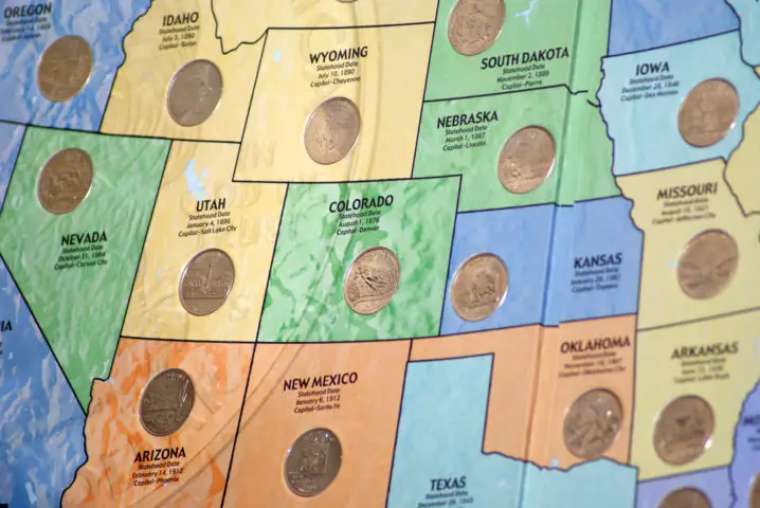
It took 10 years for the U.S. Mint to produce hundreds of millions of coins with each of the unique designs in the 50 States Quarters program.
The statehood quarters program began in 1999 and continued through 2008.
These endearing coins show us our country in all its colorful and amazing diversity. Cultural, historical, and societal icons, places, events, and people all appear on the 50 state quarters. This is one reason why the state quarters still resonate with all kinds of people — and likely will continue doing so for decades to come.
The 50 state quarters were released into circulation in the order that the statehoods came into existence.
| State | Quarter Release Date | Statehood Date | Interesting Fact |
|---|---|---|---|
| Delaware | January 4, 1999 | December 7, 1787 | First state to ratify the Constitution. |
| Pennsylvania | March 8, 1999 | December 12, 1787 | Home to Liberty Bell and Benjamin Franklin. |
| New Jersey | May 17, 1999 | December 18, 1787 | Revolutionary War crossroads; nicknamed “The Garden State.” |
| Georgia | July 19, 1999 | January 2, 1788 | First cotton-producing state and home to Coca-Cola. |
| Connecticut | October 12, 1999 | January 9, 1788 | Known for its “Nutmeg State” nickname and insurance industry. |
| Massachusetts | January 3, 2000 | February 6, 1788 | Birthplace of the American Revolution and Boston Tea Party. |
| Maryland | March 13, 2000 | April 28, 1788 | Home to Chesapeake Bay and Fort McHenry. |
| South Carolina | May 22, 2000 | May 23, 1788 | Played a key role in the Civil War and known for its sweet tea. |
| New Hampshire | August 7, 2000 | June 21, 1788 | First state to ratify the U.S. Constitution. |
| Virginia | October 16, 2000 | June 25, 1788 | Home to eight U.S. presidents and Mount Vernon. |
| New York | January 2, 2001 | July 26, 1788 | Statue of Liberty, Wall Street, and Niagara Falls. |
| North Carolina | March 12, 2001 | November 21, 1789 | First man-made flight by the Wright brothers. |
| Rhode Island | May 21, 2001 | May 29, 1790 | Smallest state and known for its clam chowder. |
| Vermont | August 6, 2001 | March 4, 1791 | Home to Ben & Jerry’s ice cream and Green Mountains. |
| Kentucky | October 15, 2001 | June 1, 1792 | Horse racing, bourbon, and Abraham Lincoln’s birthplace. |
| Tennessee | January 2, 2002 | June 1, 1796 | Country music capital, Graceland, and Smoky Mountains. |
| Ohio | March 11, 2002 | March 1, 1803 | Birthplace of seven U.S. presidents and Wright-Patterson Air Force Base. |
| Louisiana | May 20, 2002 | April 30, 1812 | Famous for its Mardi Gras celebrations and Cajun culture. |
| Indiana | August 2, 2002 | December 11, 1816 | Known for Indianapolis 500 and basketball. |
| Mississippi | October 15, 2002 | December 10, 1817 | Birthplace of Elvis Presley and home to blues music. |
| Illinois | January 2, 2003 | December 3, 1818 | Chicago skyscrapers, Abraham Lincoln, and Route 66. |
| Alabama | March 17, 2003 | December 14, 1819 | Civil Rights Movement history and home to NASA’s Marshall Space Flight Center. |
| Maine | June 2, 2003 | March 15, 1820 | Acadia National Park and lobster rolls. |
| Missouri | August 4, 2003 | August 10, 1821 | Gateway Arch, Kansas City jazz, and Mark Twain’s birthplace. |
| Arkansas | October 20, 2003 | June 15, 1836 | Diamond State; known for its natural beauty and Crystal Bridges Museum of American Art. |
| Michigan | January 26, 2004 | January 26, 1837 | Longest freshwater coastline in the world: At a whopping 3,288 miles. |
| California | January 31, 2005 | September 9, 1850 | Golden State, Hollywood, and Silicon Valley. |
| Minnesota | April 4, 2005 | May 11, 1858 | Land of 10,000 Lakes and home to Mall of America. |
| Oregon | June 6, 2005 | February 14, 1859 | Diverse landscapes from mountains to coast; known for eco-friendly culture. |
| Kansas | August 29, 2005 | January 29, 1861 | Sunflower State, known for its role in the Civil War and Wizard of Oz connection. |
| West Virginia | October 14, 2005 | June 20, 1863 | Mountain State with rich history and natural beauty. |
| Nevada | January 30, 2006 | October 31, 1864 | Silver State, known for gambling and entertainment. |
| Nebraska | April 3, 2006 | March 1, 1867 | Cornhusker State, home to the Great Plains and Chimney Rock. |
| Colorado | June 14, 2006 | August 1, 1876 | Rocky Mountains, skiing, and outdoor adventures. |
| North Dakota | August 28, 2006 | November 2, 1889 | Peace Garden State, known for its agriculture and Theodore Roosevelt National Park. |
| South Dakota | November 6, 2006 | November 2, 1889 | Mount Rushmore State, with Black Hills and Badlands National Park. |
| Montana | January 29, 2007 | November 8, 1889 | Big Sky Country, known for its vast wilderness and Glacier National Park. |
| Washington | April 2, 2007 | November 11, 1889 | Evergreen State, home to Seattle, Puget Sound, and Olympic National Park. |
| Idaho | June 4, 2007 | July 3, 1890 | Gem State, known for its potatoes and natural beauty. |
| Wyoming | September 4, 2007 | July 10, 1890 | Cowboy State, Yellowstone National Park, and Grand Teton National Park. |
| Utah | November 5, 2007 | January 4, 1896 | Beehive State, known for its Mormon heritage and stunning red rock landscapes. |
| Oklahoma | January 28, 2008 | November 16, 1907 | Sooner State, known for its Native American history and oil industry. |
| New Mexico | April 2008 | January 6, 1912 | Land of Enchantment, diverse cultures, and natural wonders like White Sands National Park. |
| Arizona | June 2008 | February 14, 1912 | Grand Canyon State, known for its deserts, canyons, and Native American heritage. |
| Alaska | August 2008 | January 3, 1959 | Last Frontier, known for its vast wilderness and wildlife. |
| Hawaii | October 2008 | August 21, 1959 | Aloha State, known for its beaches, volcanoes, and unique culture. |

Should You Collect 1 Or 2 Quarters For Each Design?
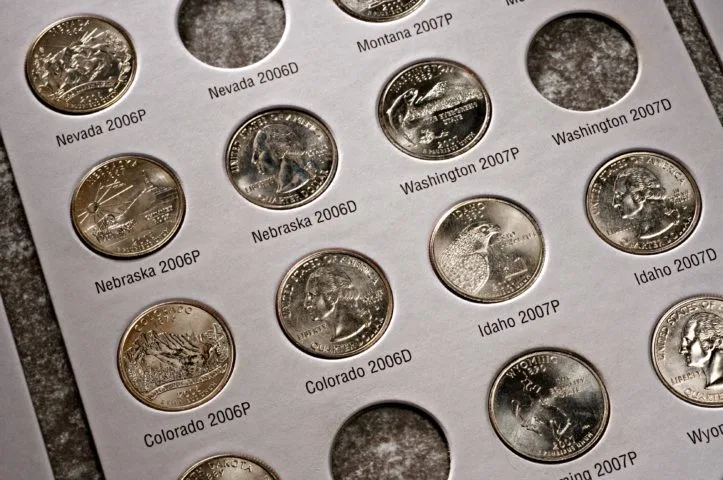
You may be wondering, should you collect both Philadelphia and Denver minted quarters for each design? Or is just one example of each design enough?
The answer is really a matter of deciding what is right for you:
- On the one hand, collecting one example of each Philadelphia and Denver design gives you examples of all the circulating 50 State Quarters.
- On the other hand, because the designs are the same on the Philadelphia and Denver quarters (except for the mint mark, which is a “P” for Philadelphia coins and a “D” for Denver), it suits a lot of people, including myself, to simply collect one nice example of each design, regardless of mint mark.
The second example above is typically called a “date set.” These are easier to collect by basic virtue of the fact there are fewer coins to find (or purchase) in order to complete a collection. Therefore, date sets are also less expensive to complete.
How Much Does It Cost To Build A Complete Set Of 50 State Quarters?

If you’re building a complete 50 States Quarters set from the coins you find in circulation, it will cost you only face value to finish the set. That would amount to:
- $12.50 for 1 example of each state quarter design
- $25 for 2 examples for each state design (including both the Philadelphia and Denver mintmarks)
If you want to buy uncirculated examples of the quarters from a coin dealer, expect to spend at least:
- $30 for a complete set consisting of 1 example of each state quarter design
- $60 and up for collections including 2 examples for each state design (50 Philadelphia mint coins and 50 Denver mint coins).
2 Simple Ways To Organize & Store Your 50 States Quarters
To store your complete 50 States Quarters set, you’ll want either state quarter map boards or state quarter folders (or albums). They can be found at most coin dealers’ stores.
Here are some differences between the two:
State Quarter Maps (Or Boards)
The easiest way to collect state quarters is to buy a 50 States Quarters map, which is specially designed just for these commemorative coins. The map of the United States has an illustration for each state and an opening to place the corresponding state quarter. Quarter maps are also a great way to get kids into the hobby!
State Quarter Folders (Or Albums)
If you’re a little more serious about coin collecting and you want your state quarter collection to include all of the quarters, then you’ll probably want to get a 50 States Quarters folder. Cardboard coin folders are the least expensive way to store your coins. They can be easily found at most bookstores and coin dealers — and they generally cost less than $10 each.
State Quarter Albums vs. Maps
The biggest difference between state quarter maps and state quarter folders is that the state folder (or album) doesn’t have illustrations of the states.
But it does have 2 corresponding holes for each state instead of 1. One is labeled “P” and one is labeled “D” — because 2 different mints produced these coins. Those with a P mint mark were made at the Pennsylvania mint. Those with a D mint mark were made at the Denver mint.
Coin folders are best if you’re collecting one example of each state quarter from each mint facility.
Coin maps are best if you’re only saving one of each state quarter, regardless of the U.S. mint facility it was made in.
3 Other Ways To Collect 50 State Quarter Sets
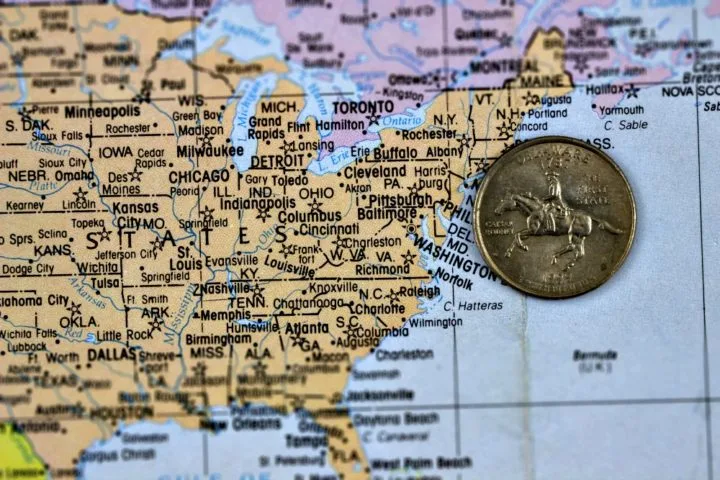
There are a few other ways to collect the 50 state quarters. Here are a few of them…
50 State Quarter Proof Sets
When the US Mint was still releasing 50 State Quarters every year, I used to buy the new quarters in proof sets. A proof set is an assemblage of collector coins that the US Mint sells each year.
A proof coin is a struck by specially prepared dies on polished coin blanks, resulting in a beautiful, virtually flawless coin that contains mirror-like surfaces and frosted designs and lettering.
The US Mint offered a few different kinds of 50 State Quarters proof sets:
- 5-piece copper-nickel clad 50 States Quarter proof sets — These contain only proof examples of the clad quarters you’ll find in circulation. Most of these 5-piece proof sets sell for less than $7 each.
- 5-piece silver 50 States Quarter proof sets — This set includes each of the quarters from a given year in a 90% silver format. Silver 50 State Quarter proof sets are generally priced between $10 and $30 each.
- Regular proof sets with 50 States Quarters — If you want proof examples of the copper-nickel clad quarters and all of the other circulating coins that were made that year, then you’ll want to buy the “regular” proof set. A regular proof set contains the 5 proof quarters plus a cent, nickel, dime, half dollar, and dollar coin (the latter for proof sets made from 2000-2008).
- Silver proof set with 50 States Quarters — This pretty much includes the same basic coins as described in the previous “regular” proof set except the dime and half dollar are — like the quarters — made from 90% silver.
Proof sets are usually packaged with coins made at the San Francisco, or “S” mint (there are some rare exceptions). Current-year proof sets can be purchased directly from the United States Mint. Older proof sets, like those containing 50 State Quarters, can be bought from your local coin dealer, online coin dealers, or on auction websites like eBay.
50 State Quarter Uncirculated Sets
Another fun way to collect state quarters is to buy them in uncirculated mint sets.
These special collector sets are packaged and sold by the US Mint and since 1959 have included one uncirculated example of each circulating coin from each mint striking them — generally the Philadelphia Mint and Denver Mint.
From 1999 through 2008, US Mint uncirculated sets included:
- 2 Lincoln pennies (one each from Philadelphia and Denver)
- 2 Jefferson nickels (one each from Philadelphia and Denver)
- 2 Roosevelt dimes (one each from Philadelphia and Denver)
- 10 State quarters (2 examples of each of the 5 states honored in a given year, with one specimen from Philadelphia and another from Denver)
- 2 Kennedy half dollars (one each from Philadelphia and Denver)
- From 2000 to 2006, there were 2 Sacagawea dollars, one from Philadelphia and another from Denver
- In 2007 and 2008 there were 8 dollar coins, 2 for each of the 4 presidents honored in the Presidential $1 coin series, with one from Philadelphia and another from Denver)
Most of the uncirculated mint sets made during the 50 States Quarters can be bought today for less than $15 to $20 each, though a couple are a little more expensive because they’re scarcer.
If you want to buy older mint sets containing 50 State Quarters for your coin collection, you’ll need to buy them from a coin dealer or on an online auction site.
Interested in buying new uncirculated mint sets? You can buy them directly from the US Mint.
50 State Quarter Novelty Gifts
You’ve probably seen 50 State Quarter holiday ornaments, state quarter spoons, colorized 50 State Quarters, and even first-day covers with postage stamps.
So many people ask me if these state quarter gifts are valuable. I always hate to break the news that these novelty coin items are almost worthless from a numismatic perspective.
There were just too many of these products made — and there aren’t enough collectors who want them.
So, no, unfortunately you’re colored Ohio quarter isn’t valuable. Neither is your California quarter spoon, Delaware quarter Christmas ornament, or your Florida quarter first day cover.
However, that does NOT mean that these aren’t really neat items to collect if you like them!
As I tell so many readers at The Fun Times Guide… don’t collect coins for what they’re worth — collect the coins you like.
Coin collecting isn’t meant to be a get-rich-quick pursuit. It’s a hobby to be enjoyed for what it is: collecting coins.
If you happen to make some money when you sell your coins, then great. It’s icing on the cake. But if you just collect the coins you like, you’ll have more fun!
So, if you want to collect all 50 of the 50 State Quarters spoons, go for it — it may be harder to complete than you think. Good luck.
What’s Next?
I’m the Coin Editor here at TheFunTimesGuide. My love for coins began when I was 11 years old. I primarily collect and study U.S. coins produced during the 20th century.
I’m a member of the American Numismatic Association (ANA) and the Numismatic Literary Guild (NLG) and have won multiple awards from the NLG for my work as a coin journalist. I’m also the editor at the Florida United Numismatists Club (FUN Topics magazine), and author of Images of America: The United States Mint in Philadelphia (a book that explores the colorful history of the Philadelphia Mint). I’ve contributed hundreds of articles for various coin publications including COINage, The Numismatist, Numismatic News, Coin Dealer Newsletter, Coin Values, and CoinWeek.
I’ve authored nearly 1,000 articles here at The Fun Times Guide to Coins (many of them with over 50K shares), and I welcome your coin questions in the comments below!


